
“My god, Senator, that’s the reason I do it. I want the mistake [made] down in Louisiana, not over in Europe, and the only way to do this thing is to try it out, and it if doesn’t work, find out what we need to make it work.”
GEN George C. Marshall
GEN George C. Marshall
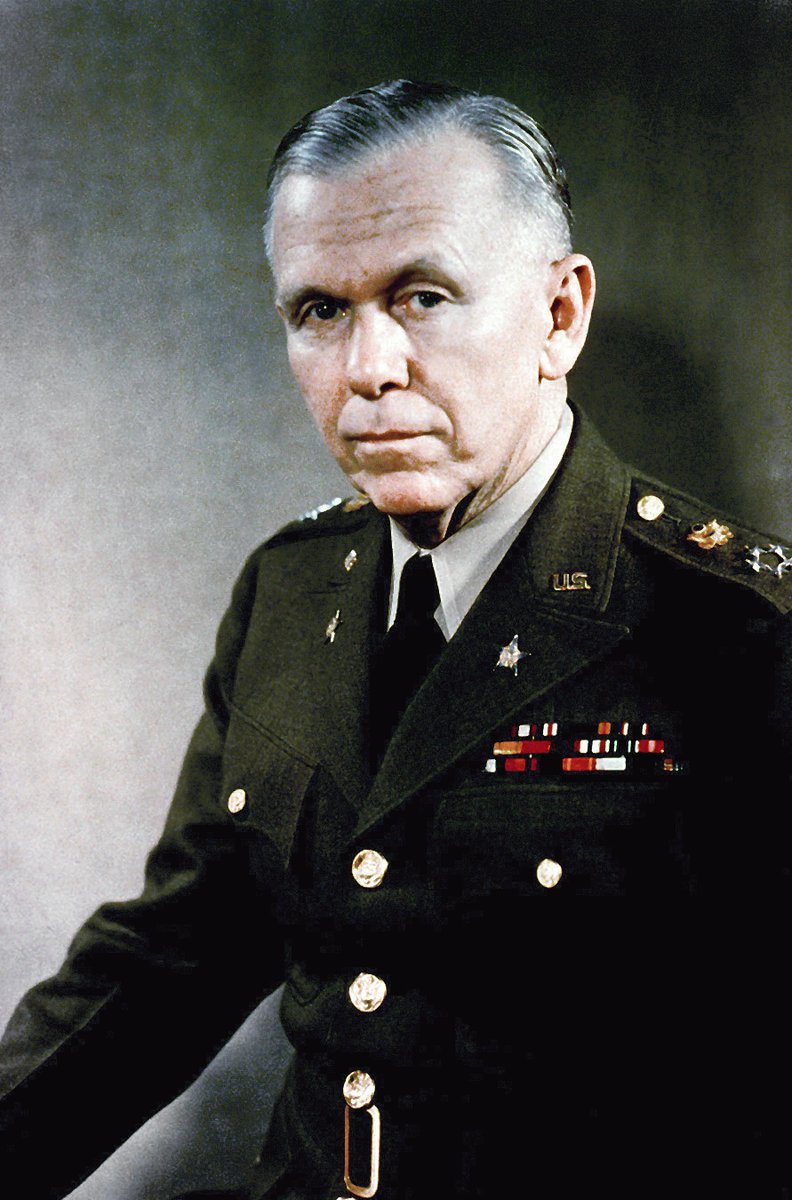
General McNair would serve as the director of the 1941 GHQ Maneuvers, along with his deputy, General Clark. 



McNair told Clark to “keep the directive as simple as possible” while providing the guidance to the training units for the first of the Louisiana Maneuvers.
Clark took a map of Louisiana and marked the assembly areas for the Third Army (Blue Force) between Lake Charles and De Ridder, and for Second Army (Red Force) east of the Red River. 

He composed general instructions to provide to the commanders of the two armies, “worded in a manner of an actual wartime directive from GHQ that would bring the two armies into conflict.” This was essentially their “Road to War”.
“War will be declared at 12:00 Noon, 15 September. Move your army secretly into position, under cover of darkness, the night of 14/15 Sept (movement to commence at 7pm, 14 Sept) for invasion of Blue territory beginning at 5:00am 15 Sept."
“At that hour, your troops will begin to cross the Red River. Destroy enemy now concentrated in vicinity of Lake Charles. Important you conceal preliminary movements toward frontier and that river crossing be accomplished as expeditiously as possible.” 
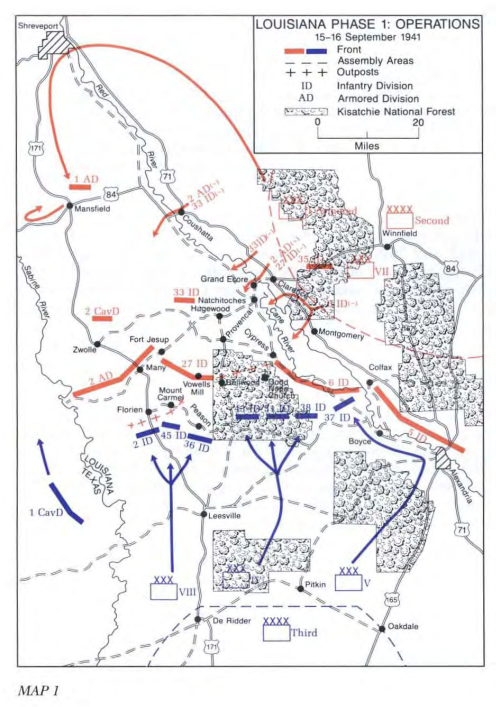
Lear’s Second Army was designated the Red Force, assigned an ambitious mission and with only two corps – VII Corps and I Armored Corps. 





VII Corps was commanded by Major General Robert Richardson and contained 27th Division (square), 33rd Division (square), 6th Division (triangular), and 107th Cavalry Regiment (horse-mechanized). 

“The two square divisions were well-trained maneuvers veterans, but the 6th Division included a large number of troops just out of basic and did not have its full allotment of motor transport.”
“The [Red Force]'s best chance of victory rested on the mobility and striking power of its armored force.”
“For the first time, the @1stArmoredDiv and 2d Armored Division, commanded by Generals Magruder and Patton, would operate side by side under the control of I Armored Corps, commanded by General Scott.” 







To augment the Red Force’s corps of maneuver, GEN Lear attached his horse cavalry units to GEN Scott’s I Armored Corps – these would be 2d Cavalry Division and 4th Cavalry Regiment. 


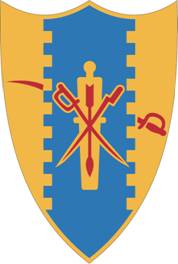
We don’t really go into the Army Air Force much in this series, but Red also had the 2d Air Task Force, which consisted of 300+ combat aircraft from 17th Bombardment Wing and 6th Pursuit Wing. They also had four squadrons of fighters and dive bombers borrowed from the @USNavy. 

GEN Lear was 62-years-old at this time, having served in the @USArmy for 43 years in Infantry and Cavalry units. He was “a meticulous and methodical soldier” but “not conspicuously suited to the conduct of dashing, highly mobile operations.” 

“Never popular with the troops, Lear had the reputation of being a stickler for spit and polish, who criticized freely and abrasively.”
The armored force would likely be the key to success for Red in the first phase of the Louisiana Maneuvers in 1941. And Lear had “never been closely associated with the development of the armored force.”
Lear: “It seems to me that many of you have the impression that an armored force can go busting into battle at a very high rate of speed. Quite the contrary. An armored force the size of a division requires a great deal of time for its deployment for battle.” 

The Blue Force, Third Army, would be led by General Walter Krueger. On 12 September, Krueger also received his directions from GHQ. 

“Reliable reports of Red movements in strength toward the Red River indicate strong probability of early attack.”
“Previous restrictions on movement and reconnaissance are removed, effective at 5:30am, 15 September, at which hour you will advance toward the frontier, destroy any enemy forces south thereof, and push into Red territory in the direction of Monroe.” 

Krueger’s Army career began in 1898 at the rank of Private. As he progressed through the ranks, he made intentional efforts to keep up with changes in the art of war, and actually became one of the @USArmy’s “best educated and most perceptive officers.” 



Two years earlier, in 1939, Krueger had commanded 2d Division, which was the Army’s prototype triangular division. He gained considerable proficiency in the use of motor vehicles for tactical maneuver while testing this new structure. 

“His enthusiastic troops called themselves Blitz-kruegers.”
At age 60, in 1941, GEN Krueger remained tough and physically active. He was a soldier’s soldier and he enjoyed a much better relationship with the National Guard component than most other Active Duty Officers of high rank, including Lear. 

GEN Krueger’s Chief of Staff was a Colonel by the name of Eisenhower. (Yes, that Eisenhower.)
“Together they formulated a simple and direct plan of operations that he issued orally to his subordinates the day before ‘hostilities’ began.”

“Together they formulated a simple and direct plan of operations that he issued orally to his subordinates the day before ‘hostilities’ began.”


“At zero hour, Third Army would lunge forward from its restraining line just north of De Ridder-Oakdale and describe a great pivot toward the northeast, three corps abreast, that he hoped would trap the Red army against the Red River between Natchitoches and Alexandria.” 

“The @VCorps, commanded by MG Edmund Daley, would form the eastern wing and the anchor for the Third Army’s pivot.” 



“GEN Krueger ordered Daley’s force, which consisted of the 32nd, 34th, and 37th Divisions (square) and the 106th Cavalry Regiment, to capture Alexandria and seize crossings over the Red River.” 

“The VIII Corps, with MG George V. Strong commanding, would travel the longest path on the outer (western) perimeter of the Third Army’s pivot.” 



VIII Corps contained the “2d Division (Third Army’s only triangular division), 43rd Division, 45th Division (perhaps the best of the National Guard divisions), and 113th Cavalry Regiment.” 







Krueger had @1stCavalryDiv in reserve, along with three experimental anti-tank groups, one of which accompanied 1st Cav to the other side of the Sabine River as part of Krueger’s plan. The other two were kept in reserve with the 1st Tank Group (two battalions of light tanks). 

The Blue Force air component included 3d Air Task Force, with 300+ combat planes of the 2d Bombardment Wing, plus 10th Pursuit Wing, and four squadrons from the @USNavy. The air commander was simply told to “support the army and seek out the Red armored force.” 

The Second Army (Red) and Third Army (Blue) closed on their Lines of Departure around sunset on Sunday, 14 September, “in the midst of a tropical storm.”
The Red Force moved up to concealed assembly positions along the Red River while their engineers started working on four ponton bridges. 

“While traveling to its crossing point at Shreveport, the @1stArmoredDiv incurred the first four fatalities of the maneuvers in traffic accidents involving civilian motorists.” 

“The first great Louisiana Maneuver [of 1941] began as scheduled on Monday, 15 September, in spite of cloudy skies and torrential rain showers.” 

At 0500, @1stArmoredDiv “rumbled across the Red River bridge at Shreveport and turned southward towards bivouac positions around Mansfield, there to await the great armored attack scheduled for two days hence.” 

A bit south, 2d Armored Division’s recon, artillery, and infantry elements crossed the Clarence-Grand Ecore highway bridge and raced westward. 

“Before the last units had cleared the bridge, leading reconnaissance elements were already on the division’s initial objective between Many and Fort Jesup.” 

Almost as soon as the exercise operations began, the Red Force’s plans started to fall apart. It’s important to note that Second Army was not a dedicated OPFOR by contemporary definition. Both units were training & being tested. @USARMYMCTP @OPSGRP_NTC @OpsGp_Jrtc @HohenfelsJMRC
Initially, the bad weather made it difficult for aerial reconnaissance flights, even for those pilots that braved the weather and flew anyway.
The conditions were not great for safe flying. A Navy dive bomber collided with a Red P-40 that first morning, at around 800 feet. The bomber was able to land safely but the fighter crashed and the pilot was lost. 

GEN Krueger’s ground and air forces managed to spot the Red armored divisions almost immediately when the maneuver began, and from GEN Lear’s perspective, the Blue Force was moving significantly faster than he had anticipated.
Blue Force organized a “textbook advance on Alexandria” with 10th Cavalry in the lead and @VCorps reaching the city without any serious opposition.
The Blue units prepared to cross the Red River but the Red Force had blown all bridges in the area. About 1200 men in three battalions of 37th Division crossed by boat. 

The Blue Force’s IV Corps also encountered no opposition as its two divisions advanced behind 6th Cavalry. It turned out that the bulk of the Red Force was in VIII Corps’ zone on the western flank.
The 113th Cavalry encountered the 2d Armored Division’s recon elements near Many, and they fought a “steady covering action all day against a growing force of Red tanks, infantry, and cavalry of the I Armored Corps.” 

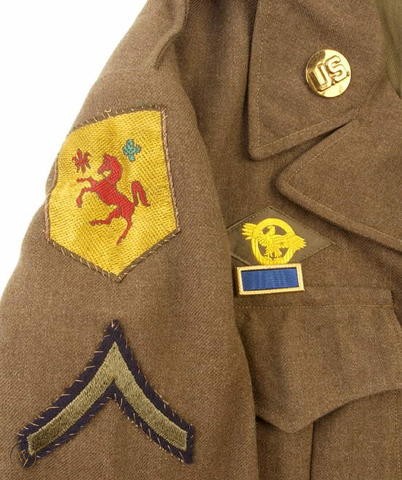

“By nightfall, Red troops of the 2d Armored Division had pushed the Blue Cavalry back through Florien on the Leesville-Many highway and established outposts on the highlands to the east.” 

“But VIII Corps was near at hand, pounding north from Leesville with the 45th and 36th Divisions in the lead. Once he ascertained that the Red armored force was massed on the west flanks, Krueger attacked the 1st Anti-Tank Group to VIII Corps.” 

GEN Lear was struggling to get VII Corps across the river & into position with his Red Second Army. Blue aircraft had been harassing them at river crossings, slowing down the Red operations. It would eventually take them a day to clear the bridges and bring Infantry up in force.
To the east, the Red 6th Division was waiting for two ponton bridges to be completed in order to get I Armored Corps and 27th Division west of the Red River. 

“For one bridge, Second Army [Red] engineers chose a site south of Natchitoches that had been improved and used in a previous maneuver. Consequently, it was completed by 1100 on 15 September, approximately 16 hours after it was begun.”
The second bridge, a short distance upstream, did not open to traffic until 1900 on the 16th of September.
By nightfall on the first day of the Maneuver (15 September), “the Red Second Army had reached the initial objective line Many-Colfax, although with incomplete and overextended units.” 

Among others, the 2nd Armored Brigade was tasked with holding a 20-mile front, and “the inexperienced and underequipped 6th Division held a line of no less than 30 miles”.
On Tuesday, 16 September, the “Red Second Army consolidated its positions and brought up the last elements of I Armored Corps and VII Corps. Along most of the front, action was limited to patrolling and skirmishing.” 

“The other major Red initiative of the day was a feint by the @1stArmoredDiv and 4th Cavalry Regiment toward Teneha, Texas. The demonstration was uncoordinated and poorly executed, and apparently deceived nobody in Third Army except for some civilian journalists.”
Lear had an armored attack planned for the 17th. In preparation for that, 2d Armored Division spent the 16th clinging to the northern face of Peason Ridge, trying to expand jump-off positions on the highlands. 
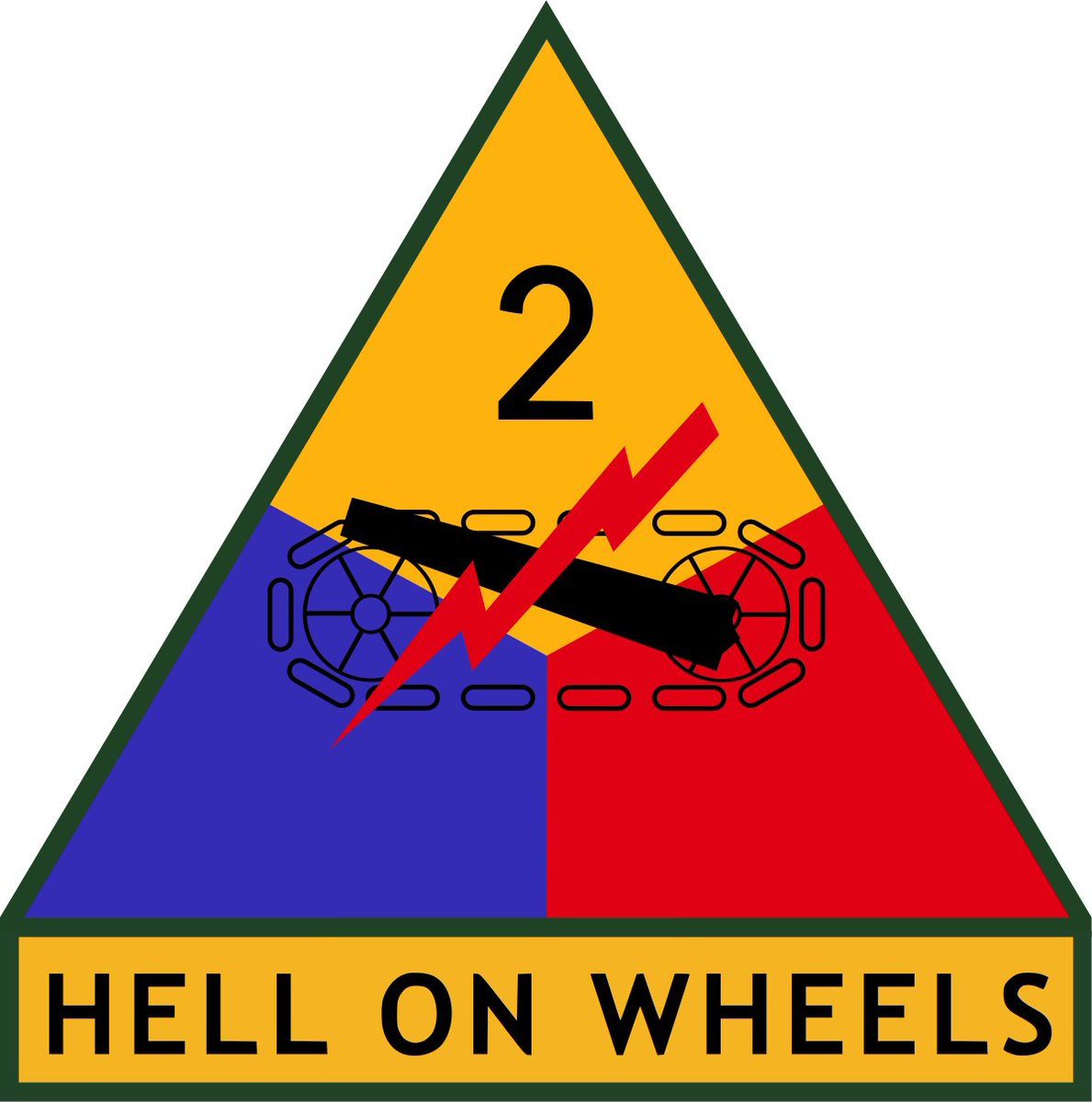
“Blue resistance was stubborn.”
“Although Krueger had initially been surprised to find the Red armored force so far to the north and west, his reaction was swift and vigorous. Third Army completely reoriented its axis of advance.”
“Instead of wheeling towards the northeast to come parallel to the Red River (and in so doing, presenting its left flank to I Armored Corps), the Blue army had begun to pivot toward the northwest in a maneuver that would bring it face to face with the Second Army.”
To accommodate this movement, GEN Strong leading VIII Corps “covered his front with mixed horse-mechanized teams of the 113th Cavalry Regiment as he brought the 2nd, 36th, and 45th Divisions into line abreast.” 

Strong had “received orders to maintain pressure and make limited advances while the rest of Third Army pivoted on its position.” So, VIII Corps served as Third Army’s western anchor for the pivot.
“In the center of the Blue line, [Krueger] reinforced IV Corps with the 1st Tank Group and ordered it to attack vigorously. The IV Corps began constructing a ponton bridge over the Cane River west of Colfax that would open into the weakest part of the Second Army line.”
“Opposite IV Corps, the 6th Division’s intelligence section had incorrectly deduced that the flat, swampy land between the Cane and Red Rivers was impassable; consequently, that particular corridor… was not even under observation, leaving the 6th Division’s flank in the air.”
At the end of the second day, General Lear considered the plan for the 17th in light of the reverses suffered by Second Army on the 16th. “He received a reassuring but misleading memo from General Scott, the I Armored Corps commander.” 



“According to all G-2 information which I have been able to obtain from all sources, the situation is developing favorably for the execution of the main effort of the Second Army in accordance with the plan submitted… on September 14.”
Lear recognized that his Red Second Army was not in a position to launch the attack as planned, so instead he dedicated the 17th to “probing the Blue defenses and securing a better base from which to attack… the next day.”
It is not uncommon for plans to change during exercises even today so this type of adjustment is normal. With that said, Lear’s decision to postpone his “decisive attack until conditions improved” would come at a cost. @USARMYMCTP @OpsGp_Jrtc @OPSGRP_NTC @HohenfelsJMRC
“By surrendering the initiative on 17 September, he would allow Krueger’s Third Army to complete its reorientation, a fact that Lear should have realized, for by this time he knew Third Army’s dispositions in detail.”
“Prisoners had revealed information freely, Blue maps and orders had been captured, and Third Army’s movements were observed from the air with increasing ease as the weather improved.”
“Lear knew, for example, that two powerful Blue corps were converging on the badly overextended 6th Division in the unprotective terrain of the Red River Valley only 20 miles from his own forward headquarters.”
He did not alter his plans, and instead chose “not to dilute the impact of the planned armored attack by committing reserves for defensive purposes, despite the imminence of the Blue threat to the east flank.”
By contrast, GEN Krueger’s Third Army had eight of its nine Infantry divisions in line by nightfall on the 16th. 

“Blue troops held key terrain on both flanks, were closing on the enemy in the center, and possessed the initiative all along the front line that ran from the vicinity of Florien in the west to the Cane River near Colfax.” 

Lear’s Red Second Army began the 17th with a two-pronged assault intending to drive the Blue VIII Corps back and keep them back to prep for the armored attack now planned for the 18th. This two-pronged attack was conducted by 2nd Armored Brigade.
“This, the first major armored operation of the maneuvers, made little headway. The armored troops, which included the 41st Infantry Regiment, tanks of the 66th Armored Regiment (light) and artillery support, found the north-south roads thoroughly covered by Blue anti-tank guns.”
“One column, finding Florien held by a large anti-tank force, made some progress by sideslipping west of the Many-Leesville road. But Blue anti-tank guns from the 2d Division stopped it after a few miles’ advance.” 

The Red Force lost valuable ground in the center of their line, and Blue Force gained effective control over a sparse network of roads that laced through the Kisatchie National Forest, providing jump-off positions for further against the Red front.
“The Blue army scored its greatest success of 17 September in the flat open ground on Second Army’s eastern flank. The IV Corps advanced along the vital Natchitoches-Alexandria highway and pushed the overmatched Red 6th Division pell-mell 15 miles back.” 

“The Blue 37th Division of @VCorps exploited the undefended ground between the Cane and Red Rivers, advancing another 5 miles behind 6th Division’s flank before being discovered.” 

“Troops of the 38th Division volunteered to swim the rain-swollen Cane River to join 37th Division’s advance. In the attempt, 5 soldiers of Company B, 150th Infantry, struggled and sank in the muddy waters.”
“Umpires stopped the battle; Red and Blue combatants dropped their weapons, shed their packs, and dived into the river. Three men were rescued and revived; two other drowned.” 

“GEN McNair was later to cite the incident in refuting claims that enlisted men were disinterested participants in large-scale maneuvers.” 

McNair:
“The death of these fine solders was even more heroic than if it had occurred in battle, for such sacrifices are not expected in maneuvers.”
“The death of these fine solders was even more heroic than if it had occurred in battle, for such sacrifices are not expected in maneuvers.”

There was another element of the Blue Force that was creating problems for Second Army, and it’s one we have not talked about much yet because the main units were not yet formed.
“At 0930 [17 Sept], 127 soldiers of Company A, 502d Parachute Battalion, jumped from 13 transports over the town of Clarence on the east bank of the Red River.” 

“In spite of barely adequate training and inadequate materiel*, the parachutists made a well-executed jump and embarked on a daylong career of mayhem.”
*The men and their equipment were dropped from different aircraft.
*The men and their equipment were dropped from different aircraft.
“They commandeered vehicles, blew a ponton bridge, and captured a number of startled Red troops. Two hours elapsed before Red forces, consisting of one anti-aircraft battery, brought any significant resistance to bear.” #Airborne
“One party of parachutists even managed to raid Second Army’s permanent headquarters at Winnfield.”
“Although the parachute attack was a suicide mission that had little bearing on the ground battle (no attempt was made to link up with Blue forces to the south), the raid did succeed in distracting and embarrassing the Red army.”
By the end of the day on the 17th, the Blue Third Army had completed its reorientation and was in full contact with the Red Second Army from flank to flank.
Lear decided to proceed as planned with his armored attack for the 18th, even though events of the 17th had worsened his situation for the attack.
The original plan was for a concentrated attack. The current plan looked more like “a series of diverging thrusts spattered across the entire Red front.”
2d Armored Division knew it would face three, fully alert Blue infantry divisions, an anti-tank group, and some 200 +/- anti-tank guns just in the vicinity of Florien. 

I Armored Corps did not complete the orders until 2030 the night before, so @1stArmoredDiv which had been placed on alert at 1300, could not even begin its movement out of reserve bivouacs until at least 2200.
Once in motion, @1stArmoredDiv found that some routes were crowded with soldiers and vehicles from other units moving up from reserve.
“As armored and infantry units became entangled in the darkness, @1stArmoredDiv’s chances of launching its attack on time vanished. Sunrise on 18 September found the 1st Armored Division still struggling through traffic jams behind Red lines.”
“On one road, a Signal truck laying wire for an infantry division blocked traffic in both directions, creating a 5-mile tie-up.” 

Although 2d Armored Division began the two-pronged attack on schedule, at 0600 on the 18th, things did not go smoothly. “After advancing a few miles, the force collided with Blue anti-tank guns north of Florien and lost 20 or 23 tanks in the lead battalion.”
Blue anti-tank guns deployed and were redeployed to keep fighting back the Second Army elements, “finally bringing the column to a halt late in the day.” 

“At a considerable cost, 2d Armored Brigade had advanced 10 miles but had failed to secure any of its objectives.”
The 68th Armored Regiment attacked the anti-tank line east of Mount Carmel around noon on the 18th, and although this forced Blue guns to yield some ground, it failed to achieve a breakthrough after 2 hours of intense fighting.
“Without adequate artillery and infantry support, the Red tanks had little choice but to charge anti-tank positions head on and attempt to overrun them.”
Unless you’re @18airbornecorps or the @82ndABNDiv it’s really not a great idea to “Leroy Jenkins” your exercise.
Unless you’re @18airbornecorps or the @82ndABNDiv it’s really not a great idea to “Leroy Jenkins” your exercise.
“After sustaining heavy casualties, the tanks withdrew and reformed. They reemerged from their assembly area around 1645 and resumed their ineffectual frontal assault against the wall of anti-tank guns.”
“For its effort, the 68th Armored Regiment succeeded in overrunning only 9 anti-tank guns, at a cost of 31 tanks.”
The tank-antitank battles in the first phase of the 1941 Louisiana Maneuvers “were among the most bitterly fought of the maneuver.”
“Soldiers on both sides became so caught up in the struggle that umpiring deteriorated👀 In their frustration, armored troops tried to override and bully the umpires accompanying Blue anti-tank units.”
“Some insisted that, under Umpire Manual rules, anti-tank guns as well as Infantry were neutralized when within 100 yards of a tank. Others refused to be ruled out of action by anti-tank umpires, claiming that only a tank umpire could rule out a tank.”
By 1630 on the 18th, 2d Armored Division “had lost 98 light tanks, 17 medium tanks, and 98 other armored vehicles. The division was spread out over a 15-mile front and, if anything, the Blue line was stronger than ever.”
At one point, elements of 1st Armored Brigade were sent on a path that, perhaps on maps in the HQ looked promising, but were “in reality a one-lane mud track winding through some of the roughest terrain in the maneuver area.”
Due to the terrain conditions, off-road travel was not feasible, which forced the unit to spread out significantly along the road, and “to make matters worse, the Brigade’s route also ran directly along the Blue 31st Division’s front.”
“The fight quickly grew in intensity and tempers began to flare.”
“Blue soldiers began throwing handy objects at 1st Armored Brigade’s tanks and soon discovered the pleasing effect that occurred when glass bottles filled with the acid used to make smokescreens shattered against armored hulls.”
“Six tank crewmen were burned badly enough to require medical attention.”
“Officers were not immune to the increasing bellicosity. As the battle raged through the dense pines, commanders began arguing with the umpires and challenging their decisions.”
“One confrontation became so ugly that, according to an umpire’s report, ‘Colonel Hasterly… was ruled out as a casualty to help the situation.’”
By the end of the day on the 18th, Blue Infantry elements from the 21st Division had surrounded the Red assembly area near Good Hope Church, cut off Red supply lines, and captured the Red fuel train. 

Before Second Army could implement orders for 19 September, “word came from the GHQ director’s headquarters to halt the maneuver at 1530.”
“Apparently, McNair felt that the outcome of the battle of the Red River was no longer in question and that continuing the maneuver would serve no further training purpose. He may also have timed the recall to prevent fighting in the streets… during Friday afternoon rush hour.”
“Most importantly, the troops had to be rested and transported to their assembly areas in preparation for the second [phase].”
“Soldiers greeted the end of the maneuver with relief. Although tired, they were reportedly in good spirits, with the possible exception of the armored troops, whom a civilian journalist described as being ‘cocky and brave’ on Monday, but ‘silent and unhappy’ on Friday.”
McNair took the opportunity to praise the efforts so far, particularly emphasizing the successes of the anti-tank elements. He also offered critiques but made a point to reserve any finger-pointing for the officers in charge. 

“In keeping with his belief that training deficiencies were but a symptom of leadership failures, General McNair reserved most of his criticisms for the commissioned ranks.” 

“At the highest levels he found that orders were too often complex, obscure, and late, sometimes arriving at subordinate commands after the hour they were to be executed.”
“He also expressed dissatisfaction with the widespread inability of commanders to utilize all of the forces at their disposal, particularly the artillery.”
“He cited instances of artillery orders arriving too late to allow survey and registration, of artillery immobilized because its transport was being used to shuttle infantry, and of commanders who simply allowed potentially useful artillery to remain idle.”
He criticized officers who occupied “excessive frontages. Though not faulting Second Army by name, he gave instances of divisions covering fronts of 20 and 27 miles and individual battalions deployed over several miles.”
“Under these conditions,” he said, “control is difficult, if not impossible, and there can be no weight to the attack nor power to the defense.” 

And he blamed inadequate staff work for the incredible traffic jams and the disruptions experienced in the administration of supply.
Regarding the “failure” of armored forces in this first phase of the 1941 Louisiana Maneuvers, a significant amount of criticism pointed to deficiencies in Armor Doctrine at the time. The coordination within armored divisions was poor, and many of the units acted independently.
“The failure to practice combined arms, in combination with the relative immunity from tanks accorded anti-tank guns under the Umpire Manual, made it almost inevitable that the armored forces would suffer much and accomplish little.”
But there was no time to ponder these setbacks or celebrate victories.
“A full interpretation of the tank-antitank issue would have to wait, for Phase II of the Louisiana Maneuvers was soon to put Second and Third Armies to the test again.” 



If you're just tuning in or you've missed any of the previous threads, you can find them all saved on this account under ⚡️Moments or with this direct link twitter.com/i/events/13642…
• • •
Missing some Tweet in this thread? You can try to
force a refresh






















